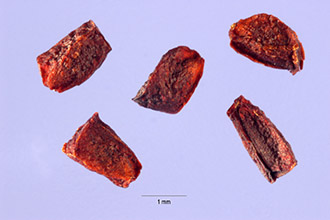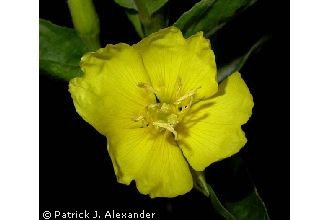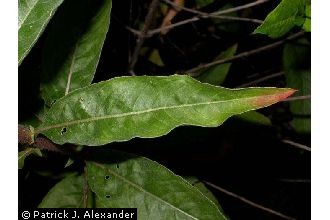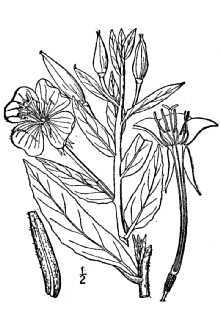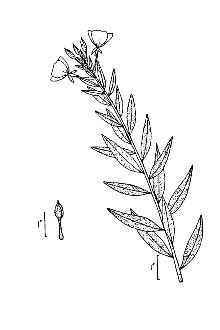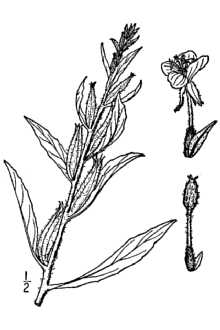Oenothera muricata L.
Scientific Name: Oenothera muricata L.
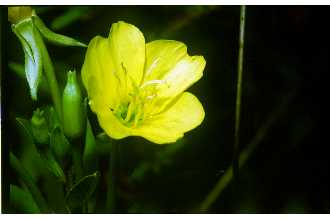
| General Information | |
|---|---|
| Usda Symbol | OEMU2 |
| Group | Dicot |
| Life Cycle | Biennial |
| Growth Habits | Forb/herb |
| Native Locations | OEMU2 |
Plant Guide
Alternate Names
Weedy evening-primrose, German rampion, hog weed, King’s cure-all, fever-plant
Uses
Ethnobotanic: The Cherokee, Iroquois, Ojibwas, and Potawatomi were among several Native American tribes that used common evening-primrose for both food and for medicinal purposes. The roots were boiled and eaten like potatoes. The young leaves were cooked and served as greens. The shoots were eaten raw. A tea was made from the plant and used as a dietary aid or stimulant to treat laziness and “overfatness.” A hot poultice made from the pounded roots was applied externally to treat piles and boils. A poultice made from the entire plant was used to treat bruises. The roots were chewed and rubbed onto the muscles to improve strength. The plant was used to treat pain associated with menstruation as well as bowel pain. Handfuls of people still use the plant today, medicinally and for food. Other: Common evening-primrose is commercially cultivated in over 15 countries for its oil which contains the essential fatty acids, linoleic acid and gamma linolenic acid (Kemper 1999). When the seedpods ripen, the tall stalks can be cut and used as interesting additions to dried arrangements. ©William S. Justice @ PLANTS Wildlife: Hummingbirds visit the flowers to obtain nectar and insects to eat. The seed capsules provide food for many other birds during the winter months. It is thought that the plants are pollinated by night-visiting hawk moths, which feed on their nectar. Japanese Beetles prefer the leaves of common evening-primrose to those of other garden plants.
Status
Please consult the PLANTS Web site and your State Department of Natural Resources for this plant’s current status (e,g, threatened or endangered species, state noxious status, and wetland indicator values), Use soil moisture sensors to measure the soil moisture of Oenothera muricata L..,
Weediness
This plant may become weedy or invasive in some regions or habitats and may displace desirable vegetation if not properly managed. Please consult with your local NRCS Field Office, Cooperative Extension Service office, or state natural resource or agricultural department regarding its status and use. Weed information is also available from the PLANTS.
Description
General: Evening Primrose Family (Onagraceae). Oenothera biennis is a biennial, herbaceous forb. The family is so-named because the flowers are partially to fully closed during the day and open in the evening. The bright yellow to gold corolla is 2-5 cm wide, with four petals. The fragrant flowers usually last only one to two days. The erect stem, which sometimes branches near the top, can be covered with hairs. The plant grows from 3-25 dm tall. Basal leaves, which form a rosette, are from 10- 30 cm long. The stem has alternate, lanceolate-shaped leaves, 2.5-15 cm long, that are shallowly toothed and wavey at the edges. The leaves are usually hairy. The plant flowers can from June through October. Distribution: For current distribution, please consult the Plant Profile page for this species on the PLANTS Web site.
Adaptation
Common evening-primrose grows in dry open fields, along roadsides, railroad embankments, waste areas and in open woods.
Establishment
These plants do best in well-drained soils in full sun. They can be easily grown from seed. The seeds are ripe when the seed capsule begins to split open, usually in October. To insure even planting, mix the seeds with a small amount of sand prior to sowing. The seeds usually germinate within four weeks. Thereafter, the plants will generally self-sow. Please use care when cultivating this plant as it has become invasive in many parts of the world.
Control
Please contact your local agricultural extension specialist or county weed specialist to learn what works best in your area and how to use it safely. Always read label and safety instructions for each control method. Trade names and control measures appear in this document only to provide specific information. USDA, NRCS does not guarantee or warranty the products and control methods named, and other products may be equally effective. Cultivars, Improved, and Selected Materials (and area of origin) These plants are readily available from commercial sources. Contact your local Natural Resources Conservation Service (formerly Soil
Conservation
Service) office for more information. Look in the phone book under ”United States Government.” The Natural Resources Conservation Service will be listed under the subheading “Department of Agriculture.”
Plant Traits
Growth Requirements
| Temperature, Minimum (°F) | -28 |
|---|---|
| Adapted to Coarse Textured Soils | Yes |
| Adapted to Fine Textured Soils | Yes |
| Adapted to Medium Textured Soils | Yes |
| Anaerobic Tolerance | None |
| CaCO3 Tolerance | Medium |
| Cold Stratification Required | No |
| Drought Tolerance | Medium |
| Fertility Requirement | Medium |
| Fire Tolerance | Low |
| Frost Free Days, Minimum | 120 |
| Hedge Tolerance | None |
| Moisture Use | Medium |
| pH, Maximum | 7.0 |
| pH, Minimum | 5.0 |
| Precipitation, Maximum | 55 |
| Precipitation, Minimum | 20 |
| Root Depth, Minimum (inches) | 10 |
| Salinity Tolerance | None |
| Shade Tolerance | Intolerant |
Morphology/Physiology
| After Harvest Regrowth Rate | Slow |
|---|---|
| Toxicity | None |
| Shape and Orientation | Erect |
| Nitrogen Fixation | None |
| Resprout Ability | No |
| Active Growth Period | Spring, Summer, Fall |
| Bloat | None |
| C:N Ratio | Medium |
| Coppice Potential | No |
| Fall Conspicuous | No |
| Fire Resistant | No |
| Flower Color | Yellow |
| Flower Conspicuous | Yes |
| Foliage Color | Green |
| Foliage Porosity Summer | Dense |
| Foliage Texture | Coarse |
| Low Growing Grass | No |
| Lifespan | Short |
| Leaf Retention | No |
| Known Allelopath | No |
| Height, Mature (feet) | 5.0 |
| Growth Rate | Rapid |
| Growth Form | Single Crown |
| Fruit/Seed Conspicuous | No |
| Fruit/Seed Color | Brown |
| Foliage Porosity Winter | Porous |
Reproduction
| Vegetative Spread Rate | None |
|---|---|
| Small Grain | No |
| Seedling Vigor | High |
| Fruit/Seed Period Begin | Summer |
| Seed Spread Rate | Moderate |
| Seed per Pound | 1376000 |
| Propagated by Tubers | No |
| Propagated by Sprigs | No |
| Propagated by Sod | No |
| Propagated by Seed | Yes |
| Propagated by Corm | No |
| Propagated by Container | No |
| Propagated by Bulb | No |
| Propagated by Bare Root | No |
| Fruit/Seed Persistence | Yes |
| Fruit/Seed Period End | Fall |
| Fruit/Seed Abundance | High |
| Commercial Availability | Contracting Only |
| Bloom Period | Late Spring |
| Propagated by Cuttings | No |
Suitability/Use
| Veneer Product | No |
|---|---|
| Pulpwood Product | No |
| Post Product | No |
| Palatable Human | No |
| Nursery Stock Product | No |
| Naval Store Product | No |
| Lumber Product | No |
| Fodder Product | No |
| Christmas Tree Product | No |
| Berry/Nut/Seed Product | No |

